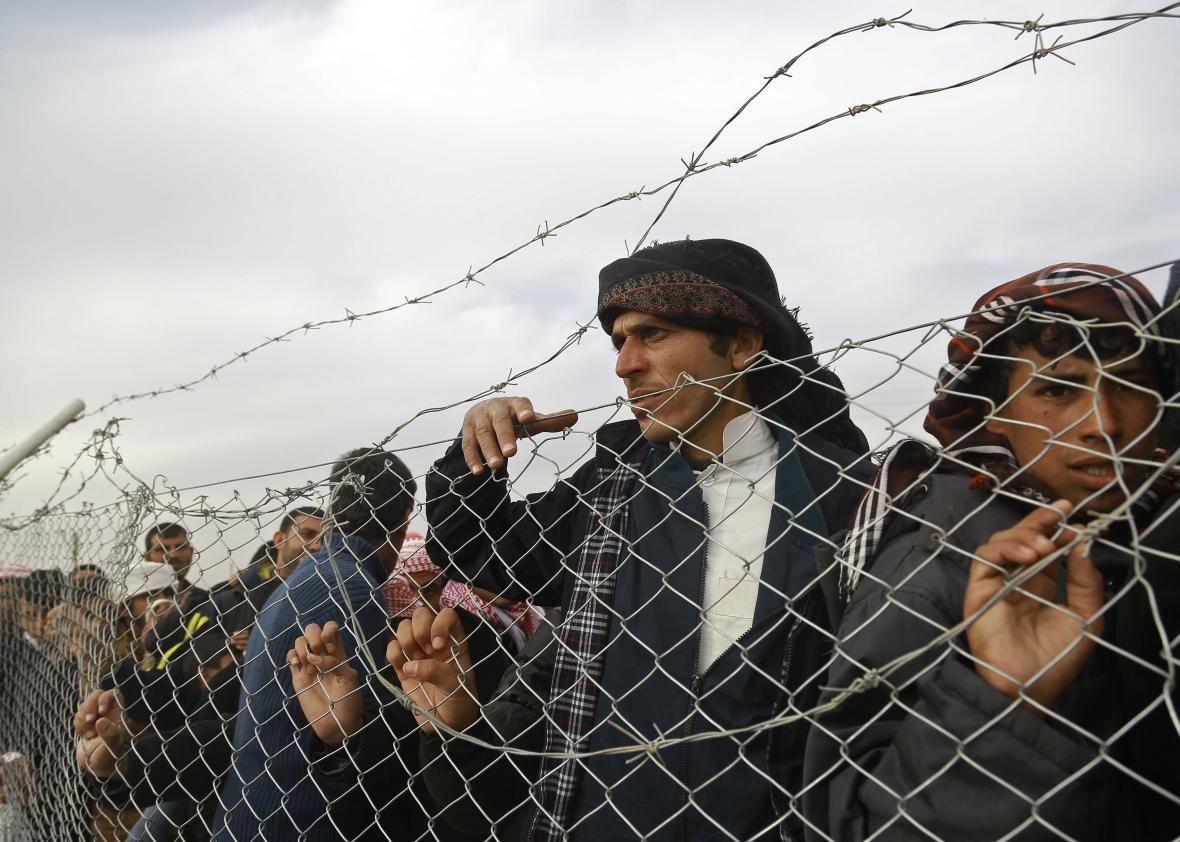This post has been updated to reflect news developments.
Donald Trump has issued an executive order temporarily banning refugees and blocking visas from being issued to anyone from Iraq, Iran, Libya, Somalia, Sudan, and Yemen, and indefinitely banning refugees from Syria. This move will do far less to deter violence, extremism, and terrorism than punish victims of those forces. In fact, many of those needing asylum are fleeing some of the very same groups the U.S. is fighting. Here’s a brief look at the conditions in those seven countries:
Iraq
Iraq was already one of the world’s top refugee-producing countries under Saddam Hussein’s rule, and the 2003 U.S. invasion made things worse, with around 15 to 20 percent of the country’s population displaced either internally or externally by sectarian violence and the collapse of public order. More than 3 million people have been displaced in Iraq since ISIS fighters began taking over parts of the country in 2014, including the more than 160,000 displaced by the recent fighting in Mosul. Many of those displaced have fled the possibility of massacre, torture, or enslavement by ISIS or sectarian killings by pro-government militias.
Iran
The U.S. saw a major influx of refugees and immigrants from Iran following the 1979 Islamic revolution, many of them religious minorities, young men fleeing military service, or professionals seeking education and job opportunities in the U.S. Numbers of asylum seekers from Iran have fallen off in recent years, though discrimination against women and minorities as well as persecution of the political opposition continues to be dire. Even after the 2015 deal lifting sanctions on Iran’s nuclear program, the U.S. and European Union continue to maintain sanctions on Iran for its human rights practices.
Libya
According to the U.N.’s Office for the Coordination of Humanitarian Affairs, more than 2.5 million people in Libya are in need of protection or assistance as a result of the country’s ongoing violence. The political chaos in the country since the overthrow of Muammar Qaddafi in 2011 has escalated to a state of virtual civil war, with rival governments claiming legitimacy and a patchwork of local militias, including ISIS, fighting for territory. According to Human Rights Watch, “Forces engaged in the conflict continued with impunity to arbitrarily detain, torture, unlawfully kill, indiscriminately attack, abduct and disappear, and forcefully displace people from their homes.”
Somalia
Somalia has been mired in civil war since the late 1980s. Though the al-Qaida-linked al-Shabaab militia has lost most of the territory it once controlled, violence continues as shown by Wednesday’s coordinated gun and bomb attack in the capital, Mogadishu. The country also faces alarming rates of malnutrition and food insecurity, exacerbated by a crippling ongoing drought. More than 2 million people born in Somalia now live outside the country. While populations in Europe and North America have grown, the majority live in the Horn of Africa, including in Kenya’s sprawling Dadaab refugee camp, the world’s largest, which the government there controversially plans to close within the next few months.
Sudan
Hundreds of thousands of people have been displaced in Sudan by armed conflicts, particularly the government’s attacks on civilians in the South Kordofan, Blue Nile, and Darfur regions, including indiscriminate bombings, the deliberate destruction of villages, and sexual violence. Activists and human rights defenders, particularly women, have faced harsh crackdowns as well. The country’s president, Omar al-Bashir has been charged with genocide by the International Criminal Court.
Syria
More than 400,000 people in total have been killed in Syria since the civil war broke out in 2011, according to the U.N.—hundreds in the recent fighting in Aleppo alone. Civilians have faced airstrikes (including the deliberate targeting of hospitals), barrel bombings, deliberate starvation, the continuing use of chemical weapons, torture, and sexual violence by Bashar al-Assad’s forces, as well as violence from ISIS and other rebel groups. More than 4 million people have fled Syria since 2011, most of them living in neighboring Lebanon, Jordan, Turkey, and Iraq. Millions more are displaced within the country.
Yemen
Yemen had been facing chronic poverty, political instability, and water shortages even before the outbreak of violence between Saudi-backed forces loyal to former President Abdrabbuh Mansour Hadi and the Iranian-backed Houthi rebel movement in 2015. More than 7,000 people have been killed since, and 16 million are in need of humanitarian assistance due to malnutrition or disease. According to UNICEF, more than 400,000 children are at risk of starvation in the country, one of whom dies every 10 minutes due malnutrition, diarrhea, and respiratory-tract infections. In case you think that’s not America’s problem, keep in mind that the U.S. has been supplying Saudi Arabia—a country that is notably not on Trump’s list despite its past support for extremist movements—with many of the weapons used to conduct its disastrous bombing campaign.
